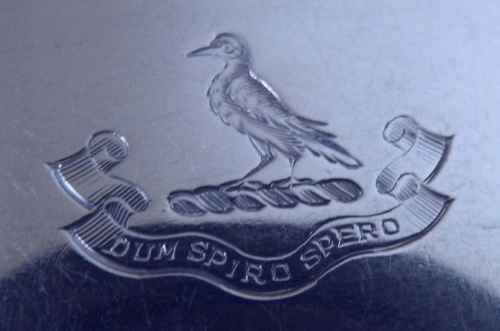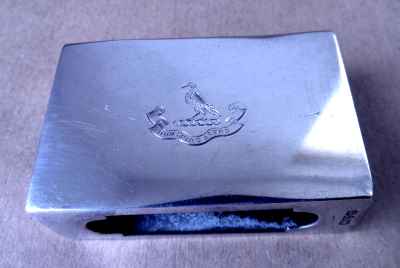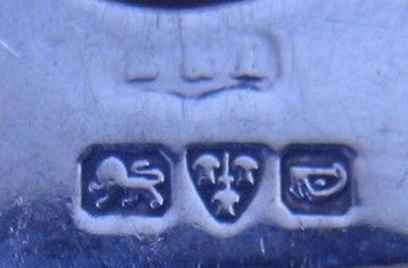 newsletter
# 144 May 2016
newsletter
# 144 May 2016www.ASCASonline.org SITE MAP
email: silverassociation@yahoo.it
YOUR GUIDE TO MAY NEWSLETTER: articlesnew members members' windowmail to ASCAS replies to questions a page per month a silversmith per month a word per month a book on my shelf a crest per month contributors to this Newsletter search engine disclaimer and privacy policy A new article for ASCAS website
Patricia F. Singer presents: |
top page - page map |
Members' Window # 112

Maurice Meslans presents:
|
Mail to ASCAS: e-mail
silverassociation@yahoo.itDavide Fratianni writes:
... I'd wish to know who is the maker of this silverplate coffee set.
Thank you
Davide Fratianni
The maker is James Deakin & Sons see my website at http://www.silvercollection.it/electroplatesilverD.html
Giorgio Busetto
Replies to questions
Luigi Masciullo
receives these answers about his silver chalice
(see April 2016 Newsletter)
Christophe Ginter writes
The maker is Joseph Philippe Adolphe DEJEAN, registered 1846-1865. Napoléon III period
Christophe Ginter
Jean-Gabriel Lamorte writes
This is the chronology of the firm of chalice's maker:
- Martin & Dejean, 1837-1846, (Dejean A., 1846-1886, Succ.), M&D, une ancre et deux étoiles, orfèvrerie: partie d'église et de table, 24 Parvis-Notre-Dame, Paris.
- Joseph-Philippe-Adolphe Dejean, 1846-1865, (Martin & Lebas1865-????, Succ.), DEJEAN, une ancre en haut, une étoile en bas, L'orfèvrerie, 24 rue Notre-Darnes, Paris.
- Joseph-Philippe-Adolphe Dejean, 1861-1865, (Martin & Lebas,1865-????, Succ.), AD, une ancre en haut, une étoile en bas, orfèvrerie d'église argentée, 20 Parvis-Notre-Dame, Paris.
- Martin & Lebas,1865-????, MARTIN & LEBAS, une ancre et deux étoiles, L'orfèvrerie d'église, 20 Parvis Notre-Dame, Paris.
Jean-Gabriel Lamorte
"A PAGE per MONTH"
In this column we presents a page obtained from makers'
brochures, books, auction catalogs, advertising or whatever
other printed paper, related to silver, that may be of interest
for ASCAS members.
The images will be published at a "low resolution" level and for
private and personal use only.
This column is published under the kind permission of Giorgio
Busetto's website
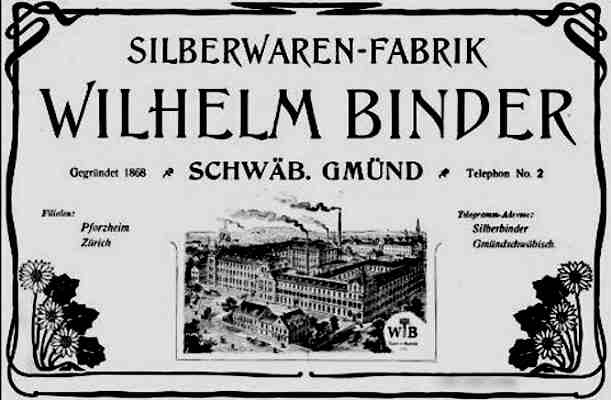 |
This month ASCAS presents an ancient advertisement of:WILHELM BINDERBinder Wilhelm GmbH - Schwäbisch Gmünd, Silverware maker / Silberwarenfabrik: founded 1868
|
"A WORD per MONTH"
In this column we present an abstract from a page of the "What is? Silver Dictionary"courtesy of
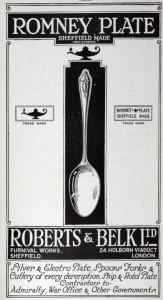
|
TRADE NAMES OF BRITISH SILVERPLATEE.P.N.S. (Electroplated Nickel Silver) and EPBM (Electroplated Britannia Metal) are the most common names attributed to silver plate items.EPNS and EPBM are names used by the generality of the manufacturers but many other customized names were adopted. The objective of British manufacturers was to present their product as "something special", despite that the metal was substantially the same and the electroplating process entirely similar. Following this commercial strategy, silverplate makers devised a variety of trade names to stamp on their products next to or in substitution of the trade mark. A wide array of "fantasy" names was adopted but many of them were derived from the firm's name (Martinoid, Culfonia, Leviathan, etc.) or from geographical locations (Bengal silver, Nevada silver, Brazilian silver, Britanoid, etc.). MORE |
"A SILVERSMITH per MONTH"
In this column
we present marks, information and history of silversmiths and
silver manufacturers.
This column is published under the kind permission of Giorgio
Busetto's website

LAMBERT & Co |
"A CREST per MONTH"
In this column we
present images and descriptions of Crests and Mottoes of British,
Irish and Scottish families as engraved on silver items.
This column is published under the kind permission of Giorgio
Busetto's website

FAMILY CRESTS: LIST OF NAMES
Closing our May 2016 edition of ASCAS Newsletter I hope
you have appreciated its content.
Your comments, suggestions and advice will be of great help.
My thanks to Davide Fratianni, Christophe Ginter, Jean-Gabriel Lamorte, Maurice Meslans and Patricia F. Singer, for their precious contributions.
Giorgio Busetto
Secretary
DISCLAIMER AND PRIVACY POLICYASCAS is a community of people having a common
interest in antique silver.
|








